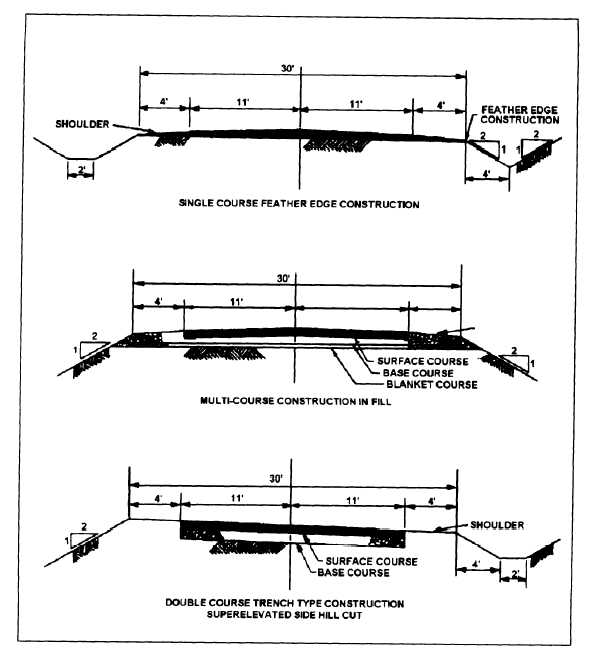Figure 3-6.—Typical section.
configuration of the completed road should be. You will
the type and thickness of the base and surface materials,
also use sections for staking out roads, for determining
earthwork requirements, and for determining how
closely the completed road conforms to its original design.
Typical Section
In the construction of a road, certain conditions or
requirements must be met. One requirement is that the
shape and features of the road be as uniform as possible.
This and other requirements are stipulated in the typical
section for the road. (See fig. 3-6.)
The typical section of a road shows exactly what the
road should look like after it is constructed. It includes
the crown, superelevation, ditch slope, cut slope, fill
slope, and all horizontal widths of components, such as
surface, shoulders, and ditches. Since slight deviations
will occur during construction, a tolerance in
construction is allowed. However, the shape and
construction of the road should conform as closely as
possible to the typical section. (For general provisions
and design criteria, refer to NAVFAC DM-5.5.)
Typical sections are prepared for both straight and
curved portions of the road. The typical section for a
curved portion of a road differs from the straight portion
in that the shape of the roadbed is different. In a typical
3-8



